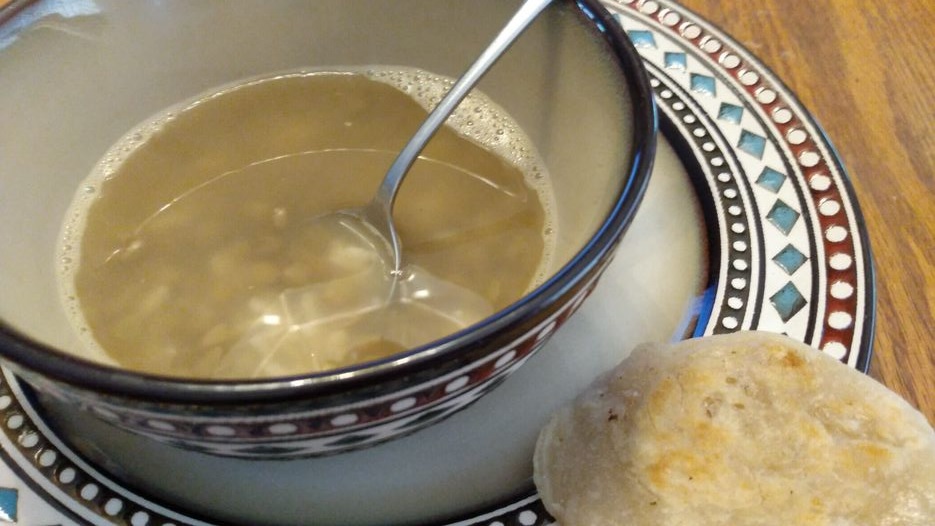Today, I complete the Ration Challenge. For the past seven days, my diet consisted of the same rations provided to Syrian Refugees in Jordan. This is a fundraiser for Church World Service. You can make your donation at this link:
I did get a bit of variety, such as a can of sardines, a couple of eggs, and a potato. But for the most part, my “staff of life” was rice, chickpeas (garbanzo beans), and lentils. For the week, I had about three pounds of rice, 3 ounces of dried chickpeas, and 6 ounces of lentils. Each day, at least one of my meals consisted of a soup with these ingredients, flavored with chicken bouillon. I also had three cups of flour (which I turned into the flatbread shown above), but most of my carbohydrate needs came from the rice.
My soup was satisfactory, but many other participants were able to come up with much more creative recipes for the ingredients. You can see many of them in their Facebook group.
One of the focuses of this website is emergency preparedness, and it didn’t escape my notice that these ingredients would form an inexpensive base for emergency food storage. They do require cooking, but they are inexpensive and have a practically indefinite storage life. These ingredients fed me relatively well for seven days. For one year, I would need the following quantities:
At today’s normal supermarket prices, these ingredients would cost about $125. And chances are, by shopping around and buying larger packages, the cost would be even lower. (Even though I didn’t add it to my soup recipes, one of my major sources of calories this week was the 12 ounces of cooking oil. That works out to about five gallons per year, which would add approximately $30 at typical supermarket prices.) One would not eat well if these were the only things you had to eat, but this relatively small expense would guarantee that one person would have minimal nutrition for a full year. It seems like a cheap insurance policy.
For those of us in places like North America and Europe, it seems inconceivable that we might become “refugees” and have to worry about finding enough food to eat. But I suspect that most of the Syrian refugees in camps in Jordan didn’t think so either. Most of them were probably living middle-class lifestyles at some point. They weren’t always refugees, just as you and I are not refugees today.
If we take a little bit of time to plan ahead for emergencies, we can help ourselves at the time of some future disaster. But more importantly, we can be in a position to help our friends and neighbors.
And if you are able, please make a donation to help today’s refugees through Church World Service at this link:
Some links on this site are affiliate links, meaning this site earns a small commission if you make a purchase after clicking on the link.


